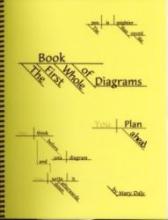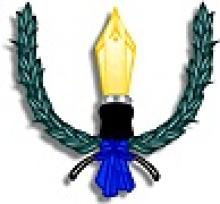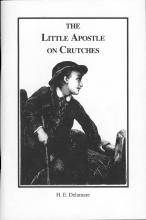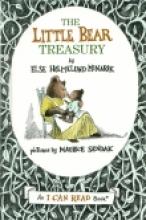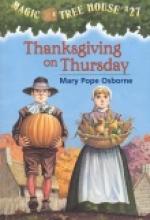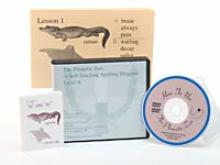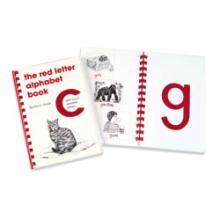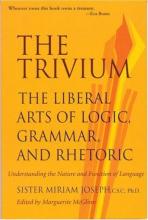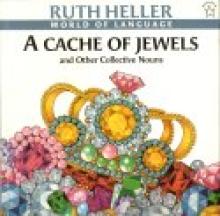Language Arts
The First Whole Book of Diagrams
The Complete Book of Diagrams is the public school version of the original diagramming book. It does not contain references to God. That version is available from the Riggs Institute.
The Institute for Excellence in Writing
The Institute for Excellence in Writing, owned by a Catholic convert and home school father, teaches the "structure and style of writing" through live and video workshops. This program is used throughout Canada. As do other programs IEW teaches structure (organizing material for writing) so that the final written piece will be logical, but unlike most programs children are trained to do this by using the writings of good authors. The structure of writing is taught by having children read literature, outline the literature, narrate from their outline, then write their own piece. This eliminates the problem of what to write about and gives the child a "feel" for the flow of good writing. The first of the 5 videos shows the parent how to teach outlining and the beginnings of style. Style, that which makes for a sophisticated sentence as opposed to a "Dick and Jane" sentence, is not taught by most writing programs. IEW teaches style by providing children with a checklist of things that should be included in their writings. They are taught to include strong verbs, to change the part of speech with which they begin their sentences, to include clauses, and many other things all of which is taught in a systematic way which the child can easily grasp and remember because they have the checklist next to them. My children enjoy this program and have made great strides in their writing. This flexibility works in favor of individual differences, but figuring out a schedule was challenging at first. Unlike the Writing Strands program, IEW requires a good deal of parental involvement, especially in the beginning. The 5 video tapes can be rented for $80 or purchased for $130. While the initial outlay for IEW is more than other programs, it is the only one you need to teach writing through high school. This program teaches style and structure for: non-ficiton, critical essays (book reports), narratives, creative writing, writing from pictures, research reports. The IEW forces the child to write better sentences and use more descriptive words, which adults who read a lot tend to do naturally.
The Little Apostle on Crutches
The Little Apostle on Crutches by H. E. Delamare is the story of young Willie– almost nine–whose cheerful goodness touches the lives of everyone he meets.
Through his many adventures, he always strives to do what is right, making him an excellent role model for younger children. For example, he faces persecution from another boy who covets his newspaper corner. Yet, he treats the other boy with continual kindness.
Willie is unique in that he is not afraid to share his faith. When asked about the family's financial difficulties, he replies..."'We're Catholics and that helps one so much, doesn't it? It keeps one contented and happy–and teaches one to bear one's troubles.'"
Because the book was originally published in 1911, there is a quaint old-fashioned flavor to some of the language. However, this never interferes with the meaning of the story. For example, as a complement, another boy says of Willie, "'You're a bully little chap, anyhow!'"
A short 86 pages long, The Little Apostle on Crutches is republished by Catholic Heritage Curricula. Although the story would be a great a read aloud for any age, the reading level is 3-6 grade. This paperback has no illustrations, but you do not miss them.
Update from webmaster, March 2024: It appears that CHC is no longer printing this book. However, you can click here for the Internet Library copy of The Little Apostle on Crutches or find it from a variety of sources who reprint public domain works.
The Little Bear Treasury
Copyrights 1957/1960/1961
The Magic Tree House Series
In subsequent installments they find out that the tree house is owned by Morgan LeFay of King Arthur lore. She is a librarian for Camelot and travels about collecting books. Each time the children enter the tree house they take off on another adventure. Every four books in the series deals with a theme or problem that the children have to solve.
- Books 1-4: meeting Morgan and finding out what she is all about.
- Books 5-8: finding clues and artifacts that will release Morgan from a spell cast by Merlin that turned her into a mouse.
- Books 9-12: solving riddles to pass the test to become Master Librarians.
- Books 13-16: saving books from four ancient time periods that would otherwise be lost forever.
- Books 17-20: rescuing a mysterious dog that is under a magic spell.
- Books 21-24: finding 4 special kinds of writing for Morgan's library in order to save Camelot (something to follow, something to send, something to learn, something to lend).
Jack and Annie are good foils for each other in the stories. Jack is cautious and reflective, always taking notes about the things he sees, or reading about them. Annie is more adventurous, jumping right into the action of the time period. For a few of the books, Mrs. Pope's husband collaborated with her to write non-fiction companions. The books are short enough to not be intimidating for new readers and interesting enough to keep them wanting to read more. My boys love them and read the new titles that come out even though they are much below their reading level now. They are intrigued by figuring out the kid-sized mysteries.
Some Christian groups have banned these books because they deal with magic. I did not find the use of magic offensive. There is no spell cast in the stories; we just hear that Merlin cast a spell. In fact, I thought it was kind of quaint and cute that Morgan LeFay is cast as a librarian.
In some of the stories, Jack and Annie have to learn about the religious or spiritual aspects of the time they have landed in. So, in Night of the Ninjas, they have to act out the Ninja way in order to make it through the forest without being caught by the bad guys (use nature, be nature, follow nature). In Buffalo Before Breakfast they have to imitate the ways of the Indian. This may cause some people some concern, but my children thought of it as merely historically interesting. The stories incorporate some vital historical information about the time period in which they travel, which Jack is always stopping to write down. This includes the religious beliefs of the people. When they travel to Pompeii to rescue a book, Jack reads from a research book about Ancient Roman times, including gladiators, the forum, public bathes, and myths of the gods and goddesses.
One thing I was concerned about was that occasionally in the stories Jack says about Annie's lack of caution, "I'm going to kill her." I was hoping my children wouldn't start saying that! And they haven't. One thing I wish they would imitate, though, is Jack taking notes or looking things up all the time.
These books are a good 2nd grade level reading bridge between just learning to read and harder books that can be tackled in 3rd grade. They are purely for pleasure reading!
approximately 70-80 pages each
The Phonetic Zoo
Each lesson begins with the speaker reading the rule followed by a 15 word list that includes the speaker repeating the rule every three words. After each word is presented, the student is given enough time to write down the word without feeling rushed. The word list is repeated along with the correct spelling. The student writes the correct spelling next to his word as an accuracy check, noting which words he misspelled. He then studies those words and listens to the same list (CD track) on subsequent days until he correctly spells all list words two times.
Upon first listening to the CDs I thought the program moved too slowly and that my children would find it boring. I was pleasantly surprised to discover that I was wrong. In retrospect realize that I found it slow and boring because I already knew the words, but for a student just learning the rules and word spelling it moved at just the right pace.
Phonetic Zoo provides different rules from Spelling Power that were quickly learned by our oldest child (who is not naturally a good speller.) At the beginning of eighth grade (after completing Level H in Spelling Power) he worked through the entire Phonetic Zoo high school level in 3 months and was able to apply the spelling rules in his essays. We did a follow up test to the effectiveness of Phonetic Zoo by using the final Spelling Power lists. He missed less then 5% of all words on the last two levels of Spelling Power, and the words missed were rated as being college level. For our family Phonetic Zoo is an ideal program for older students who are yearning for independence and are anxious to "be done" with spelling lessons. This review is of the "Advanced" level of Phonetic Zoo. The IEW website contains an auditory placement test that is accurate in determining which level to purchase.
The Red Letter Alphabet book
Pages are made of heavy cardstock
The Trivium: the Liberal Arts of Logic, Grammar, and Rhetoric
This little gem was used as a freshman college course after the author met philosopher Mortimer Adler and understood the importance of teaching basic language skills as the foundation of other learning. After some years of study, she put together this course in the Trivium, the three language arts – of word relations (grammar), concept relations (logic), and composition (rhetoric). The result is a primer in Aristotle's Categories, a demanding course in logic, and a prerequisite to good composition. It is not, mind you, a course in grammar conceived as the study of commas, periods, and subjunctive verbs, though it might lead to insight into these matters. Not is it a course in "symbolic logic", the modern logic stripped of thought and studied simply as a form of mathematics. Rather, Sister Miriam offers a prerequisite to philosophy and writing, for this is a course in clear thought and the right use of language.
With all this, The Trivium is demanding, yet it is very accessible. Despite its original use as a freshman college course, it reminded me very strongly of my high school logic text, which, like this, was the work of an obscure nun who had studied Aristotle and wanted his clarity to form the minds entrusted to her care. I look forward to the opportunity to use it at the high school level.
Not only is the volume accessible, but one must delight in its literacy. The illustrations are taken from the great literature of western culture – so the mind is always lifted. It is a pleasure to read, and study is always rewarding, because every step sparkles with beauty and interest as well as clarity. Many of Sister Miriam's examples were originally taken from great literature; her loving editor Marguerite McGlinn has taken the liberty of replacing those illustrations which were time-bound with even more good literature so as to move the book into its rightful place as a timeless resource.
For those who know and love Dorothy Sayers' little essay on the trivium, it may be appropriate to warn that this is not in any sense a resource for primary or middle school children.
The World of Language Series
This series of six books introduces young children to concepts of grammar through very entertaining and sometimes humorous poetry and extremely colorful pictures. The titles are: Kites Sail High: A Book About Verbs, Behind the Mask: A Book About Prepositions,A Cache of Jewels and Other Collective Nouns, Merry-Go-Round: A Book About Nouns, Many Luscious Lollipops: A Book About Adjectives and Up, Up, and Away: A Book About Adverbs. Within the context of a fast-moving collection of widely-varying and very colorful illustrations, these poems explain, list and give examples of each of the parts of speech. For example, in the book Behind the Mask, you'll find the following sentences (emphasis is the same here as it is in the text) " Of PREPOSITIONS have no fear. They help to make directions clear. Along the northern shore bear east... beyond this green, reptilian beast... past its hungry, gaping mouth... veer directly... to the south, toward a place where mermaids flock upon, beside and near a rock." These particular sentences are spread out over six pages which include pictures of an antique-looking map illustrated with ships, a treasure chest, a Tritan, etc., a large pictures of a green serpent and a page full of mermaids. My children have really enjoyed these books and I have to admit that they are a decent refresher course for moms as well.
Unfortunately, almost every book has something (usually only one thing in each book) of a possibly-objectionable nature, such as: some scantily-clad mermaids and illustrations of witches (although appropriately portrayed as ugly and scary). The series is also recommended by Seton Home Study in their online reading resource lists.

